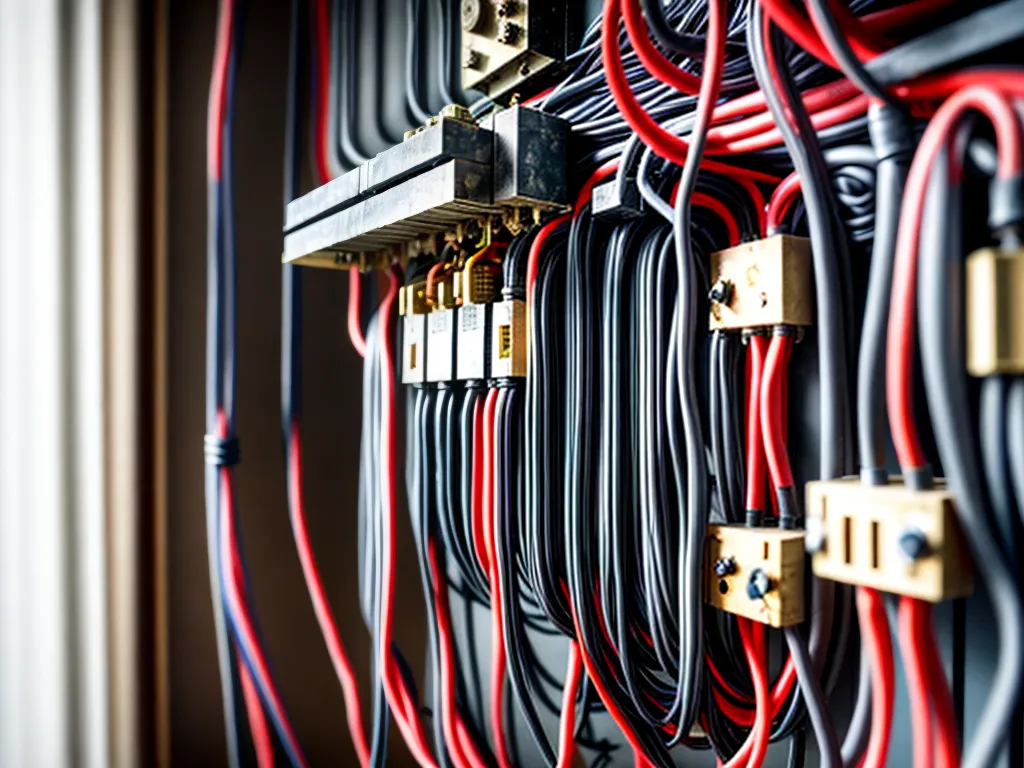
Knob and tube wiring was commonly installed in homes built in the 1920s. While this type of wiring was safe when it was first installed, it can become hazardous over time. As a homeowner with knob and tube wiring, it's important to understand the risks and follow key safety practices to keep your vintage electrical system up to code.
What Is Knob and Tube Wiring?
Knob and tube wiring consists of single black rubber-insulated wires passing through ceramic knobs mounted to framing members and ceramic tubes inserted through framing cavities. This early form of electrical wiring was common in homes built in the 1920s and earlier.
While knob and tube wiring has largely been replaced by newer and safer electrical systems, it can still be found in some older homes. As knob and tube ages, the insulation breaks down and the wires become brittle, increasing fire and shock risks.
Dangers of Outdated Knob and Tube Wiring
There are several dangers associated with keeping original 1920s knob and tube wiring in your home:
-
Fire hazard - The degraded rubber insulation and brittle wiring can lead to short circuits and electrical fires. Fires can start inside walls and spread rapidly.
-
Shock hazard - Exposed and damaged wiring can energize metal components and pose a serious shock risk, especially if grounds are inadequate.
-
Overload - Knob and tube circuits are ungrounded and often maxed out by modern loads, increasing fire risks. They lack safety devices of modern systems.
-
Insurance issues - Many insurance companies won't issue policies for homes with knob and tube wiring due to fire risks. Premiums may be higher for those that do.
-
Resale value - Outdated wiring must be disclosed and can negatively impact home sale price. Many buyers won't consider purchasing a home with knob and tube.
Keeping 1920s Wiring Safe
While it's ideal to completely replace knob and tube wiring, some basic safety practices can reduce risks if upgrades aren't possible right away:
Inspect Annually
- Check for damaged or exposed wires, cracked ceramic pieces, loose connections, signs of overheating and insulation breakdown. Look inside walls and attics.
Limit Electrical Loads
- Don't overload circuits. Avoid high-wattage appliances on a knob and tube circuit. Use power strips to control plugged-in loads.
Update Electrical Panels
- Upgrade to a grounded electrical panel with circuit breakers. This adds critical safety mechanisms that old fuse boxes lack.
Add GFCIs
- Install GFCI outlets or GFCI circuit breakers to protect receptacles. These devices shut off power quickly if electricity is flowing incorrectly.
Don't Conceal Wiring
- Don't cover knob and tube wiring with insulation or building materials. This can cause overheating.
Hire an Electrician
- Have repairs, replacements and upgrades done by a licensed electrician. Improper work on knob and tube wiring can be disastrous.
Replacing Knob and Tube Wiring
For optimal safety, it's highly recommended to fully replace vintage knob and tube wiring. Here's what to know:
-
Replacement should be done by a professional electrician.
-
All old wiring is removed and replaced with new NM cable routed through walls and attic.
-
A grounded electrical panel with circuit breakers is installed.
-
GFCI protection is added where needed.
-
All visible knob and tube wiring must be replaced before walls are re-closed.
-
Permits and inspections are usually required to ensure code compliance.
-
Costs range from $2,000-$15,000 depending on home size and scope of work.
While replacing knob and tube wiring can be a significant investment, it eliminates the serious safety risks of outdated electrical systems. Once upgraded, you can enjoy safe, modern wiring that meets all codes.